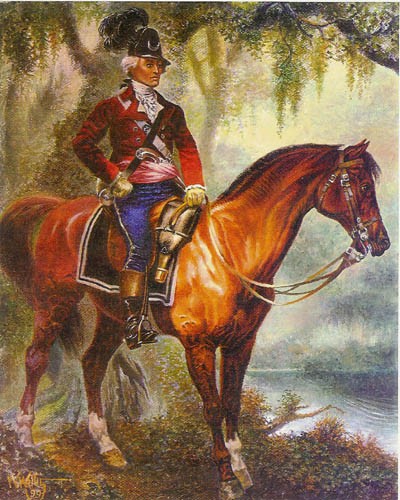
With British generals unable to pin down and destroy Washington’s army in the north, a new strategy unfolded around 1778, based in the south. It was predicated on the belief that the southern colonies contained large numbers of Loyalists who, if supported militarily, would unite to form a pro-British government. A strong Loyalist government in the south could, at best, form a base from which to attack the north – or at least allow the British to salvage colonial possessions and resources from the revolution.
The British perception of Loyalist numbers was grossly exaggerated, however, and the southern campaign would ultimately create more problems than it would solve. It would also lead directly to the Battle of Yorktown, the costly surrender that marked the end of the Revolutionary War.
By late 1780, it looked as if the British, in league with local Loyalists, were firmly in control. The turning point came at the Battle of Cowpens of January 1781, and the arrival of the French, who figured in the decisive victory at Yorktown.
“The British had based the ‘Southern Strategy’ on the erroneous premise that the majority of the population in the south was loyal to the king. The ministers in London held to this mistaken belief notwithstanding the considerable evidence to the contrary, during the course of the war. Not only was the Southern Strategy flawed, but the implementation of the strategy was often flawed as well. The British would prove incapable of adapting their plans to the reality of the situation on the ground. Yet in spite of flawed strategy and inflexible thinking, the British came very close to winning the southern campaigns – a fact that can be credited to the professionalism of the British military and the superior resources of the British state.
David K. Wilson, historian
Because of these old tensions, the southern campaign came to resemble a civil war more than any other theatre of the revolution, with neighbours and competing farmers freely engaging in retaliatory violence and, occasionally, unnecessary violence and torture. The British promise of emancipation for any African American slave who joined a Loyalist unit became a complicating factor. Many Loyalists were slave-owners, fearful of slave revolts and violence, so they feared the prospect of being swamped by thousands of freed blacks.
Copyright: The content on this page is © Alpha History 2019. It may not be republished without our express permission. For more information on usage, please refer to our Terms of Use.
